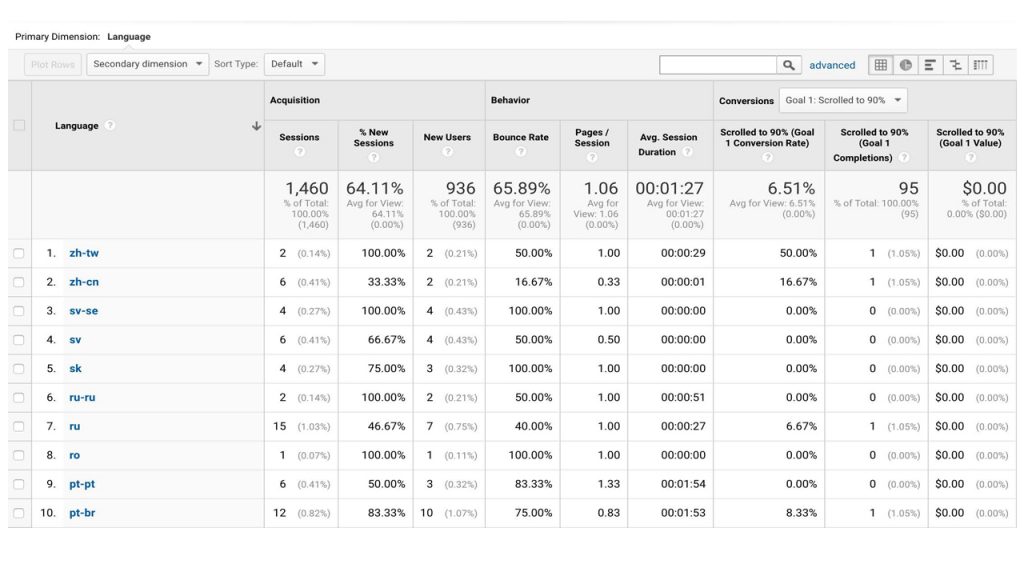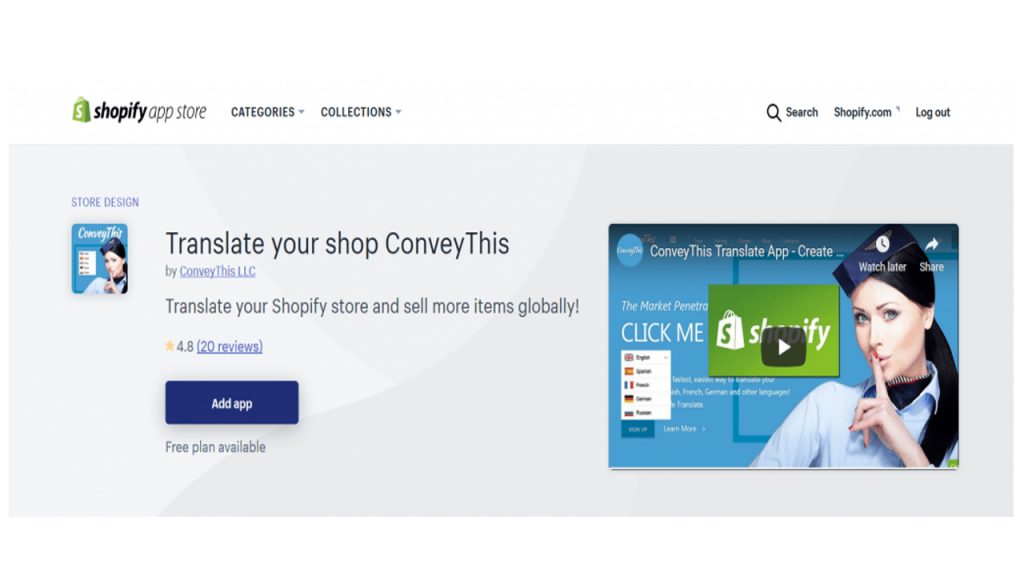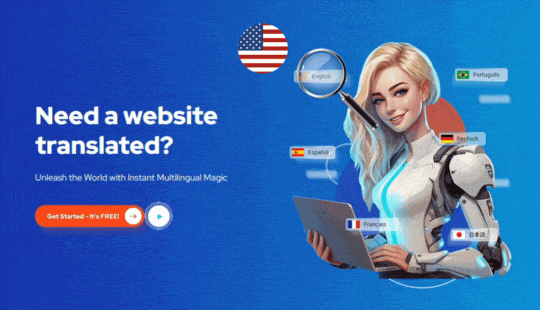
When you are just starting ecommerce entrepreneurial journey you are faced with several decisions. One of such decision that is inescapable is deciding which CMS platform you will use. Well, a very good example and popular ecommerce platform website that many use is Shopify. If you have chosen it prior to this time fine, if not you can always try it.
Another decision you have to make is whether your Shopify will remain in one language or you want a multilingual Shopify. If it is still in one language, there is a need for you to act now and start considering having a multilingual Shopify. The reason is because if you want to sell and wants to remain relevant on the global level, then you have no choice than to go multilingual.
The fact that you are reading this article shows that you are interested in knowing the relevance of having a multilingual Shopify and how you can set one up.
Benefits and advantages of having a multilingual Shopify
The focus of all or anyone trying to thrive in ecommerce is how to have increased sale. This has become easily possible especially as we live in a world where we are all more closely connected than ever before. This is to say that any entrepreneur or business owner who plans to have increased sales should go global. Well, like the popular saying ‘it is easier said than done’, you may be worried about diving into unknown and trying to go outside your zone of comfortability. If you take time to consider it, you will find out that it is a profitable course.
You will be targeting new prospective markets when you make your Shopify store available in more than one language .i.e. offering multiple languages on your Shopify store. However, it is not limited to that because you will witness increased sales when you start entering into new markets. This is possible because you are quite interested in them and you are creating a form of business that the potential customers sees as valuable.
Internationalization of business goes beyond translating your business website so as to attract new customers. It involves more than that. It goes to the fact of ensuring that the content of the website is well adapted to suit the intended market such that it is easy for prospective customers to relate with what you offer and easily patronize you. Your content should be handled in such a way that it is legally and culturally accepted in the location of target. Why? This is because from experience, 90 out of 100 buyers who are non-English speaker are not ready to buy from a product from an English website.
Now when we say you should make your store multilingual, it is to ensure that your website is prepared to accommodate increased purchases coming from many potential customers all around the world. And this is done when you let your store to be dedicated to the customers in their native language and native setting in its entirety.
While you are still with the concern that going multilingual can be tasky, be assured that this article still covers easy way to go about it.
Making a choice of the language you want your Shopify to be available in Fix at heart your targeted market and try to understand anyone you choose to venture into. You can get facts and figure on the languages of the visitors of your Shopify store and also find out how often these ones visit your website. You can get these information using website analytics and a popular tool that can easily help you is Google Analytics. If you are using Google analytics, go to your Dashboard and select Audience. From there, choose Geographical Data and then select the language. The screen below is an example of what you will likely see on clicking it:

So on seeing the analysis of the languages, you will be able to identify which language you have to translate your website into especially when you are able to note the most used language used by visitors of your website. On getting the language(s) you want to translate your website into, the next thing is to determine if machine translation will be sufficient or you need to employ a professional translator.
Setting up international shipping for your store
Selling internationally needs more than translation and placing them just on the internet. What happens when someone from another country and/or even from another continent orders for one of your products? How will you deliver it? You need shipping strategy.
You may take any or combination of the below shipping method for your international business.
- Shipping from home: every journey starts with a step. Same is with shipping. You can always start with yourself. That is you do the packaging of the products by yourself and from there you go and send it to the receiver by post office or through courier services.
This is the kind of shipping that most new ones in the business do. While it is true that it consumes time doing the shipping yourself, it is still the cheapest and more risk efficient means when there is not much orders to process.
The disadvantage of this kind of shipping method is the high cost of shipping that the customers have to bear as compared to buying from a more established bigger stores. It is not that bad because that will be a source of motivation for you to take your business to a larger one.
- Dropshipping: another better choice for starters is dropshipping. However, you cannot boast of selling the product yourself when you use this option as you will have to be depending on the dropshipping supplier. Oberlo, Printful, Spocket, and Printify are some the top dropshipping platforms.
When you use this type of shipping method, you have the advantage of easily selling your products whereas you are free from taking care of the logistics and the costs. That is the sole responsibility of your dropshipping partner.
You don’t need to bother yourself with international shipping once you subscribe to this option because easily you can get your products delivered to anywhere across the globe.
- Fulfillment Warehouse: this option is usually for stores that are well advance. Here, logistic company will be employed to manage inventory, process orders, do the packaging, and finally handle the shipping for you. This option is most suitable when there are numerous orders to handle and it will allow you to focus more on sales and marketing.
You may want to use this option as it is usually possible to negotiate shipping prices and it is easy to balance it between you and the customers. It is sometimes best to use fulfillment warehouse that is available in your targeted location.
You can always read up more on Shopify shipping through their guide.
Translating your Shopify store
Go to your Shopify store and download ConveyThis app. Shopify allows integration with apps. This is important because with ConveyThis you can automatically or manually handle the translation of your website, place an order for human/professional translators, and get you website/store optimized for SEO.
On your ConveyThis dashboard, you can edit translation manually and it is even easy to figure out positions of your translated content on your website if you use the the visual editor.
The fact that ConveyThis is SEO conscious makes it to handle translation of everything including subdomains URL so that they can be indexed for Google searches.
Try it for free by installing ConveyThis app.

Apart from the translation of words, there is something else you should take care of. That is handling the translation of the financial aspect of your store or website. An ecommerce site should be one that offers customers from the targeted location the ability to pay using their local currencies. And not only stop at that, it should offer invoice to customers so that they can feel relaxed and enjoy a warming experience on the site. You can install currency converter plugin for easy conversion of currency on your site or store. As regards to the handling the translation of the invoices, ConveyThis can handle that for you.
To sell and increase sale on the international level, it is not a matter that should be delayed but a matter of urgency that you have to translate your business website and store. And to do this, you have to be sure of what language(s) you will be translating your site or store into (you may use analytics tool such as Google analytics to figure this out), have a defined goal and make a best choice of international shipping method you will use for your business, handle the translation of your Shopify store with a wonderful translation plugin like ConveyThis, ensure that your store is having ability to convert currency into the local currency of your targeted audience, and make sure all aspect of your website is translated including the invoices. When you do all these, your Shopify store is set to witness success on the global level.

